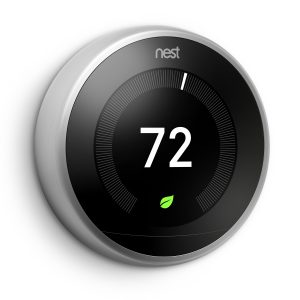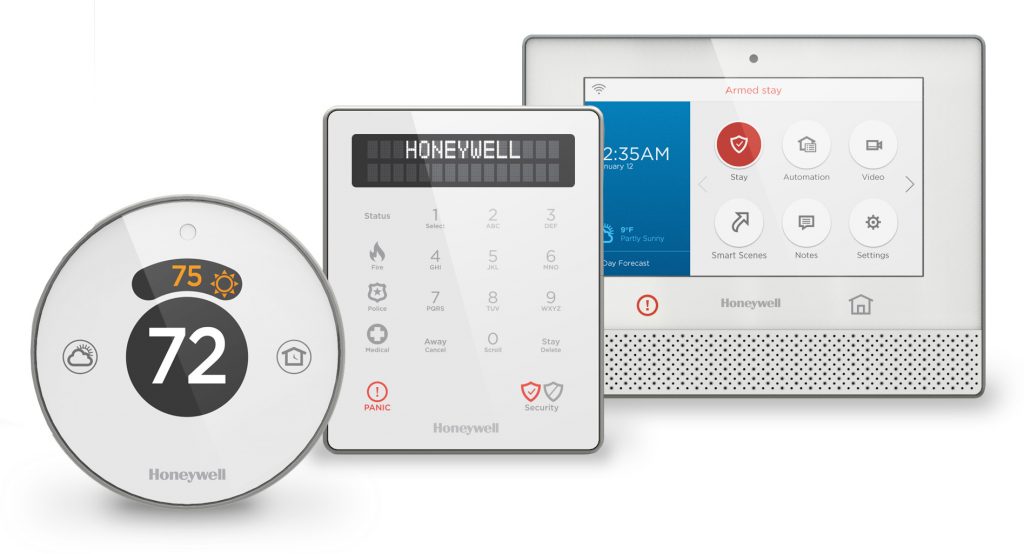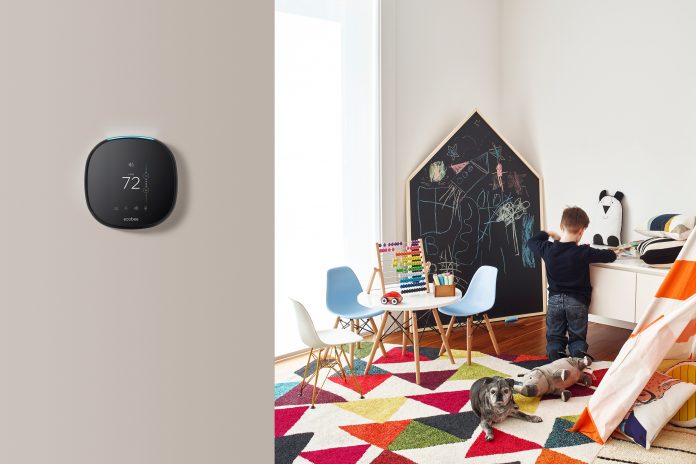Smart Thermostat Catches On in Factory-Built Market
What’s the difference between a programmable thermostat and the new smart thermostat? Well, the latest smart thermostat learns about you, for one thing.
Well, the latest smart thermostat learns about you, for one thing.
You may see this as a giant step forward for humankind – or yet another step down a slippery slope, depending on your view of our increasingly robot-controlled future. Is it “The Jetsons” or “Terminator”?
For the Terminator-minded, be warned, the perks listed on Nest’s website read a bit like a horror film trailer: “It learns what you like… It knows when you’re away… It learns about your home.”
However, independent research shows that smart thermostats save money and energy, paying for themselves within a few months from purchase. One study even suggests residing in a manufactured home could increase the amount saved.
Nest is the market leader, but it has competitors in Honeywell and Ecobee, which offer smart thermostats with varying features, but they all offer similar perks. While Nest’s hook is its ability to learn from your patterns, Honeywell’s is its ability to know where you are, using your phone’s geofencing capabilities.
Before considering any thermostat, make sure it works with your HVAC system – some systems are incompatible, so make sure you ask the right questions about how your choice for a new smart thermostat will interface with your mechanical systems.
That said, let’s get into it!
Here are the market leader’s main perks, how its competitors stack up. And a bit on why manufactured home residents might find a smart thermostat useful:
1. I can learn from your patterns, but you also can set it manually.
After installing a Nest (the website claims a 30-minute, do-it-yourself installation time, while some reviewers suggest hiring a professional), you turn your heat or cool air up and down for a few days, based on your preferences. That’s all the time Nest needs to learn your patterns and begin automatically making these adjustments for you. You also have the option to log onto your interface, via an app, and manually set these patterns.
Your Nest also chooses the temperature by sensing whether you’re at home or away, using a mixture of your phone’s geofencing feature and activity sensors. Nest argues this combo is more precise than geofencing alone, but Honeywell’s VP and general manager AJ Smith is confident in his products’ abilities: He contends Honeywell’s thermostats have the “best geofencing capabilities on the marketplace.”
Smith also points out that learning features can be arbitrary while geofencing is the option most customers end up using. Honeywell’s thermostats also can learn about your schedule in the preset phase.
If you have a pretty consistent schedule, let your thermostat learn; if not, you might want to consider the thermostat that has the better geofencing capabilities. If you don’t have a smartphone… wait, if you don’t have a smartphone, you’re still in pre-“Terminator” times.
No need for a smart thermostat!
2. You can adjust your smart thermostat remotely
Via your phone, you can turn your home’s heat or cooling up or down with the slide of a finger. This is perfect if you’re on vacation and you know your neighbor is going to come by and water your plants, or if your babysitter brought the kids home early. Of course, you have to be aware that this is happening. Or just add the babysitter to your family’s app and let your Nest, Honeywell or Ecobee device sense that someone is approaching home.
With Honeywell and Ecobee you can just as easily adjust your home’s temperature from afar. The main issue here is that Google owns Nest; it doesn’t work well with Apple products or HomeKit. So if you’re an Apple user, consider Honeywell or EcoBee. All three brands’ latest versions work with Alexa and Android products, too.


3. The smart thermostat saves energy and money
There’s a good chance your manufactured home is Energy STAR certified, so why not choose a thermostat that is too? Nest, Honeywell and Ecobee now all offer Energy STAR thermostats – though Nest relishes that it was first. Nest contends programmable thermostats can’t prove they save energy or money. However, Nest has multiple white papers that show independent studies that point to energy savings. Overall, for heating, Nest showed around 13 percent energy savings compared to baseline homes. Manufactured homes, though an admittedly small sample size, saved up to twice as much energy in one study.
Honeywell and Ecobee thermostats are proven to save energy too. Before purchasing any smart thermostat, make sure to check if you can get a rebate from your electric company.
4. It learns about your home
Back to our Big Brother future?
Nest states the device uses data from your home and location when adjusting the temperature. If you’re letting it learn from you completely, it might notice you generally turn the heat up even more when it’s cold out, and start doing so for you.
Some reviewers have noticed their smart thermostats won’t heat or a cool a second floor in quite the same way. To combat this, Nest and Honeywell have created room sensors purchased separately, and use to heat different parts of the home differently.
The Ecobee4 comes with a wireless remote sensor that you can take with you into a different part of your home, so it has a better idea of the temperature there. Earlier versions have sensors, like its competitors.
The size of a manufactured home likely makes buying extra sensors unnecessary, so you’ll save money here too.

5. If you want all of your life to be ‘smarter’, pair a smart thermostat with other products
Users can pair your Nest thermostat with other Nest items, such as its security system or smart light bulbs. If you have a smart washer and dryer (look for the “works with Nest” logo), your Nest can wait until energy demand is low to run that next load of laundry.
You also can set up your Nest to work with a humidifier or dehumidifier, but Nest recommends professional installation. Just remember that Nest isn’t an Apple fan.
Honeywell and Ecobee also provide a number of smart home appliances and can work with HomeKit as well as Android and Google’s Alexa.
Now that we’ve covered the perks, here’s what’s on the market:
Nest
Nest’s second and third generations have relatively similar metal designs, but the third senses when you approach and shows the day’s weather on its LED display. You also can choose from a variety of colors. On Amazon, the third is actually about $60 less expensive right now. Nest also offers a more economical, sleeker, plastic version (Nest Thermostat E), but it works with fewer HVAC systems.
Honeywell
Honeywell has quite a few models. Its round Lyric smart thermostats compete with Nest aesthetically, while their larger, square thermostats have much busier screens. Beyond these aesthetic differences, both thermostats are relatively the same. They also offer a budget option, the Lyric T6. Some reviews suggest Honeywell’s interfaces are buggier than Nest’s, and to connect your Honeywell, you need a “C” wire, unlike the Nest — though having no “C” wire might come with its own complications and wifi outages.
Ecobee
The Ecobee4 comes with sensors, making it a bit pricier than Honeywell’s or Nest’s models. Older versions without sensors are comparable in price to its competitors’ models. Ecobee’s designs seem just as aesthetically pleasing as Nest’s, and the thermostats are installable with either a “C” wire or a power extender kit.
For the most part, reviewers seem to like the convenience and simplicity of their smart thermostats; just make sure to research the specs of each one you’re considering, to determine which is right for your home.
And rest easy. By all accounts, no one’s thermostat has taken on a mind of its own (yet)!














